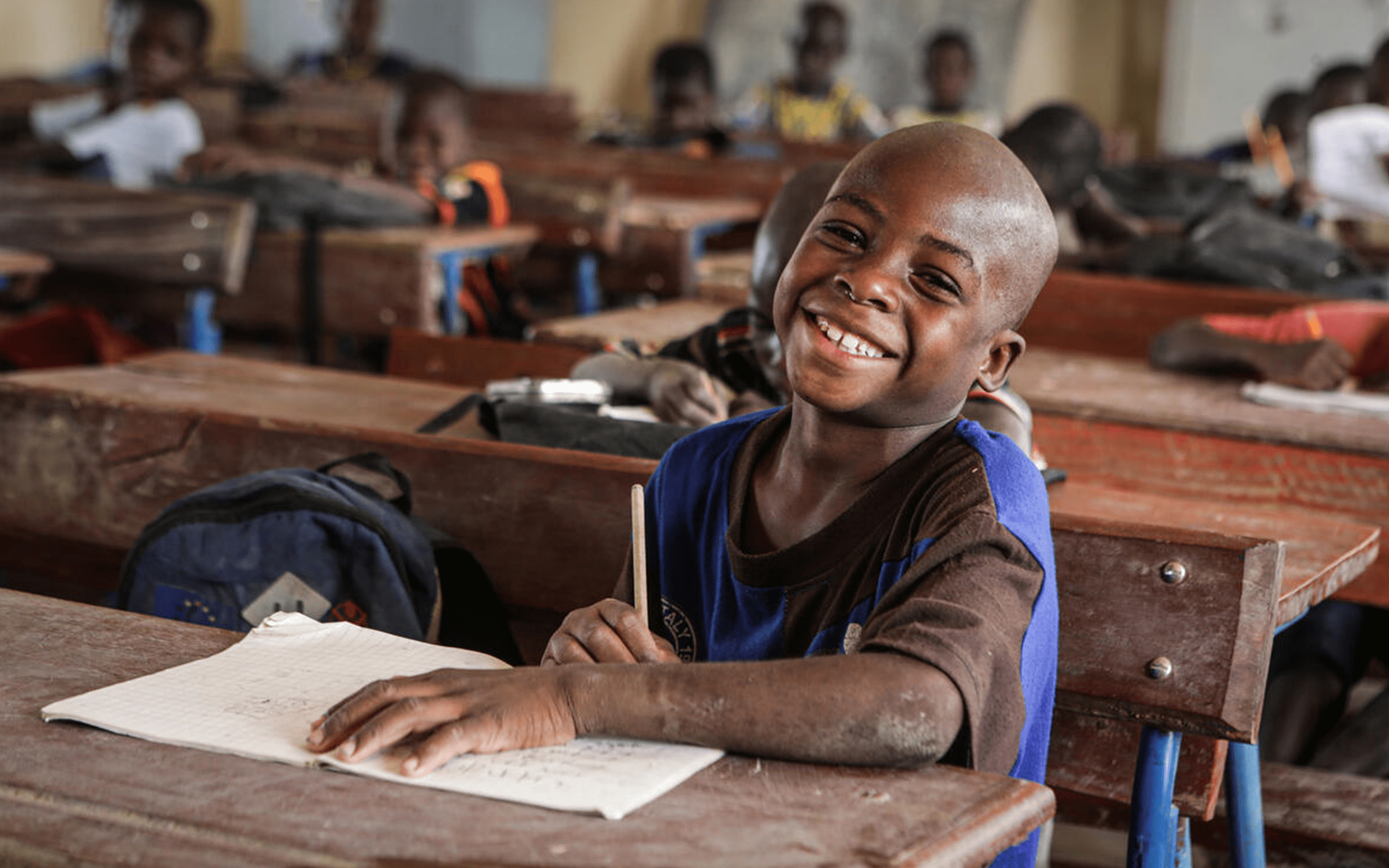The education of hundreds of millions of children in a quarter of the world’s countries is at extreme or high risk of collapsing. Our new analysis finds that factors such as climate change, a lack of COVID-19 vaccines, displacement, attacks on schools and lack of digital connectivity are jeopardising access to schooling.
The news that education is on the brink of collapse in 48 countries comes as academic school years tentatively re-start in many parts of the world with millions of children still unable to go into the classroom due to COVID-19 safety measures, economic impacts of the pandemic and continued attacks on education. This is on top of the 258 million children across the world who were already out of school prior to the pandemic.
Leaders need to learn from the COVID-19 education crisis, which has disrupted schooling for more than 90% of the world’s learners, and shock-proof education systems to ensure children in a quarter of the world’s countries don’t have their futures stripped from them.
Education systems at extreme risk
We have been rehabilitating schools in Yemen like Salem’s and he has now returned to the classroom. He said: ‘When they (the schools) are not fixed, and there’s no education, no teachers… we are unable to learn. We do not feel safe when the schools are not fixed.’
Impact of Covid-19 and climate crisis
It is estimated that 10-16 million children are at risk of not returning to school due to economic impacts of COVID-19 alone. Parents may pull children out of school to work, or they may be forced into early marriage. The climate crisis exacerbates the already huge risk, as schools are damaged or destroyed by extreme weather events, and an increasing number of children will likely have to flee their homes, leaving behind their education. The international community, including donors, need to step up and take responsibility for some of the factors that have placed these education systems at risk, such as conflict, climate change and vaccine inequity.
Children in low-income countries have lost
more of their lifetime schooldays during the pandemic compared with their peers in more well-off countries.
Inger Ashing, CEO of Save the Children, said: “We already know that it is the poorest children who have suffered the most as a result of COVID-19 school closures.
Sadly, COVID-19 is just one of the factors that is putting education – and children’s lives today and tomorrow – under threat. Around half of the 75 million children who have their education disrupted each year do so from climate and environmental threats like cyclones, floods and drought. Climate-related events have already contributed to over 50 million children being forced from their homes . Abhorrent attacks on schools continue in countries like Nigeria and Yemen.
Adding to ongoing contexts of huge youth unemployment, little primary school education and the digital divide in access to remote learning, these are creating a perfect storm for the next generation. According to the report, in order to save children’s education and prepare for the future, Ministries of Education and donors must work to tackle these threats to schooling. The affected countries need much more additional investment in their education systems from international donors.
Your support makes a difference
